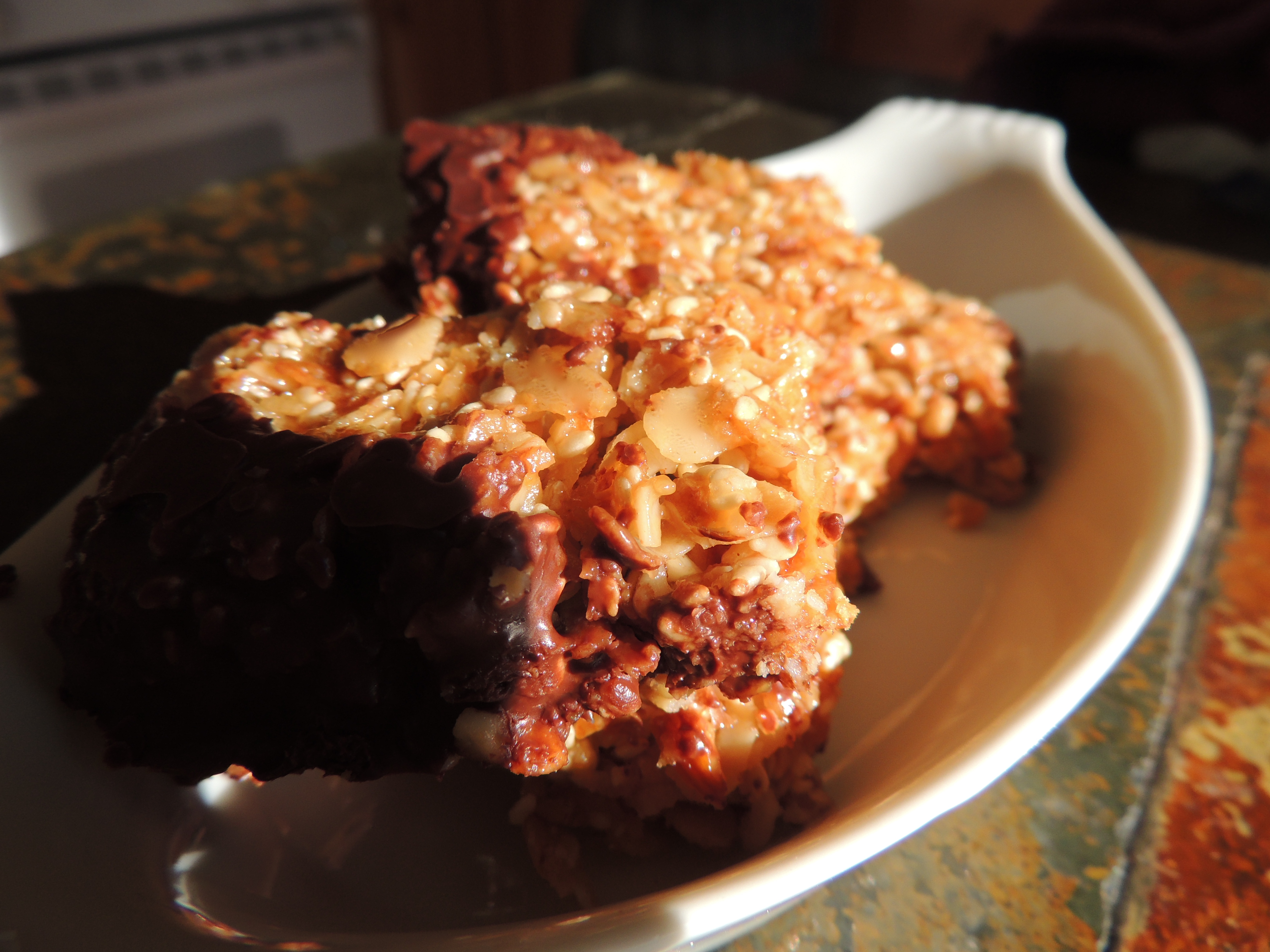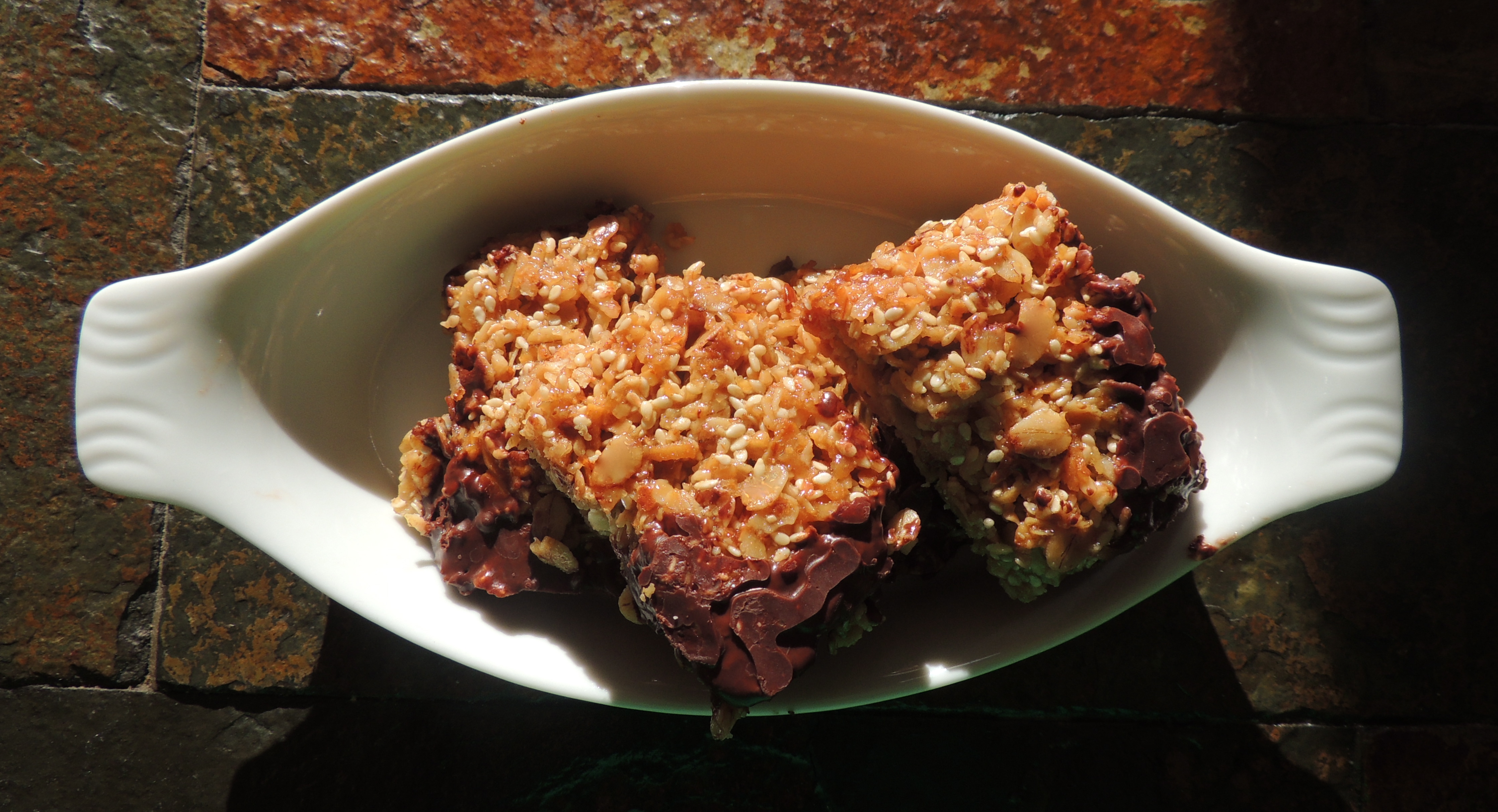It is an ingredient found everywhere- packed into “all-natural” goodies, squeezed into juices, swirled into frozen desserts, hidden in holistic looking breakfast cereals and blended into salad dressings. Pick up any “high-fuel” fitness bar and you will find typed in neat text on the crinkled wrapper: soy protein isolate. As a common ingredient in processed "health" foods, soy protein isolate has sneakily become a highly consumed “food” in our society- yet, sadly many people don't even know what it is. Discover the process involved in creating soy protein isolate and learn how to avoid it by making your own totally delicious soy and gluten-free Sprouted Nut Energy Bars to fuel you up the real food way.

The Rise and Fall of Soy
Low in fat, high in protein, rich with fiber and oh-so-conveniently cheap to produce, soy was once hailed as the infallible “health food.” Yet, with more recent studies revealing some of the bean’s less admirable attributes, this golden nutritional reputation has become somewhat tarnished. Aside from the disturbing fact that over 90% of the soy available in the United States is genetically modified, soy has been found to contain questionable hormone-mimicking isoflavones, which have the potential to disrupt endocrine function and alter growth patterns. This legume is also shockingly high in anti-nutrients such as potent enzyme inhibitors which upset protein metabolism and phytic acid which binds to many nutrients (calcium, magnesium, copper, iron and zinc for example), rendering them useless to the body. Unlike the phytates found in other grains, legumes, nuts and seeds, the antinutrients in soy are particularly stubborn and not effectively neutralized with conventional methods of soaking and sprouting. The only way to prepare soy for human consumption is through a long, slow fermentation process as represented in traditional foods such as natto, tempeh, miso and tamari sauce. Natto is particularly valuable as a real food source of vitamin K2, which is essential for the proper function of vitamins A and D, as well as calcium.
What is Soy Protein Isolate?
Because fermentation is difficult to mimic on the level of mass-production, manufacturers in the soy industry have long searched for a quick and inexpensive way to compensate for these less-than-desirable traits in their product. One popular refined industrial preparation of soy is soy protein isolate (SPI). The Soyfoods Association of America defines this product by claiming:
“Soy protein isolate is a dry powder food ingredient that has been separated or isolated from the other components of the soybean, making it 90 to 95 percent protein and nearly carbohydrate and fat-free.”
Sounds great right? Not so fast. Soy protein isolate is certainly not something you will find in nature hanging delicately from a green plant, nor is it something you are able to whip up in your kitchen. It is instead, a highly processed form of soy that is brutally mass-produced in large factories. Soy protein isolate is created from dehulled and defatted soy beans that are ground into a meal, and then treated with a series of alkaline and acid washes to treat anti-nutrients and remove fiber. The resulting protein curds left from this process are then spray-dried at extreme temperatures to create a powder. This substance is soy protein isolate- a chemically and high-temperature altereted version of soy. Expert analysis of this harsh and unnatural production method has shown that soy handled in this manner is altered in an largely unsafe way. Such concerning findings inlude the leaching into the soy during acid washing in metal tanks, formation of nitrates and other toxins with spray drying, and the complete denaturation of many of the potentially beneficial proteins upon high heat exposure. What's more, despite highly questionable results in feeding trials with rats, soy protein isolate is continually incorporated into non-dairy milks and desserts, pastas, bread, baby formulas, salad dressings and more, all the while touted as a "convenient alternative” to traditional food. Something just doesn't seem to add up.
Recipe: Gluten- and Soy-Free Sprouted Nut Energy Bars
All of this talk about soy can be confusing. Here at Radiant Life we believe in using only the most natural and wholesome ingredients. Therefore, in accordance with our core principles, we will not carry any products that contain unfermented soy. Personally, I like to avoid questionable ingredients as much as I can. And let's face it: most "energy" bars out there are NASTY. Ditch the soy additives, refined sugar and wheat with some beautifully balanced homemade bars. A healthy mixture of protein-filled nuts with the powerful fats and fiber from coconut, these nutrient-dense bars are drizzled with a bit of natural sweetness to make them truly decadent.

2 1/2 cups soaked and sprouted nuts, chopped (try a blend of almonds, cashews, pecans or walnuts)
1 1/2 cups soaked and sprouted seeds (sesame, pumpkin or sunflower)
1 cup unsweetened organic coconut flakes
1/4 cup extra virgin coconut oil
1/2 cup raw honey
1/2 tsp celtic sea salt
1 teaspoon vanilla extract
Optional: homemade carob chips or Soy-Free Dark Chocolate and 1 teaspoon coconut oil
First prepare nuts by soaking and sprouting overnight, or use Better Than Roasted Nuts and Seeds. Chop nuts by hand or use food processor to achieve desired coarseness- you may leave in larger pieces or in a finer blend depending on your texture preference for the bars.
In a medium-sized pot over low heat, mix coconut oil and honey until well blended. Stir in salt and vanilla and remove from heat. Add chopped nuts mixture, seeds and coconut flakes, folding until incorporated. Pour the mixture into a greased or parchment-lined rectangular 11x7 baking dish, then press down with a metal spatula or the back of a spoon until evenly spread across the pan.
For an all raw version, place the pan straight in the refrigerator for about 30 minutes to allow for the honey and oil to harden. cut into 12-16 bars. Bars will be chewy in texture and are best kept in the refrigerator until use so as to prevent melting. If you are on-the-go, simply wrap individual bars in parchment paper.
For a more crispy variation, bake for about 15-18 minutes or until golden brown. Allow to cool for about 10 minutes, then score into 12-16 bars. Place the pan in the refrigerator for about 30 minutes or leave out to cool completely, before cutting into bars. Bars can be stored up to 2 weeks in an airtight container.
If you want to add a bit of a carob glaze to decorate the bars, place homemade carob chips and 1 teaspoon of coconut oil in a double boiler or over very low heat until melted. Dip the bars diagonally into chocolate or carob mixture and place on rack to cool. It is possible to use dark chocolate too- however take care to find a soy-free brand as many chocolates also contain soy lecithin.
Resources
Soyfoods Associartion of North America: Fact Sheet
Newest Research on Why You Should Avoid Soy By Sally Fallon and Mary G. Enig, PhD
Vitamin K2 and The Calcium Paradox by Kate Rheaume-Bleue, BSc., ND
The Whole Soy Story by Kaayla Daniels
Find this post and other helpful real food resources on Naturally Living Monday, Fat Tuesday, Allergy Free Wednesday
